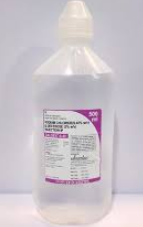
DEXTROSE/ VIOSER 5% Price
Active Substance: Dextrose monohydrate.
Overview
Welcome to Dwaey, specifically on DEXTROSE/ VIOSER 5% page.
This medicine contains an important and useful components, as it consists of
Dextrose monohydrateis available in the market in concentration
Name
Dextrose monohydrate
Precaution
Monitor blood glucose levels regularly in patients receiving dextrose, particularly those with impaired glucose tolerance or diabetes. Use with caution in patients with: Congestive heart failure (risk of fluid overload) Renal insufficiency (risk of electrolyte imbalance and fluid retention) Intracranial or intraspinal hemorrhage (risk of osmotic shifts) Check for compatibility with other IV drugs before mixing. Avoid prolonged or high-dose use without proper electrolyte and nutritional monitoring. Dextrose solutions can cause venous irritation or thrombophlebitis when given in high concentrations or rapidly.
Indication
Dextrose Monohydrate is indicated for: Treatment of hypoglycemia Caloric supplementation in parenteral nutrition Diluent for the administration of compatible medications Rehydration therapy, especially in cases of dehydration with carbohydrate depletion Emergency energy supply during metabolic stress, surgery, or trauma Management of ketosis in starvation or alcoholism
Contra indication
Do not use Dextrose Monohydrate in: Patients with severe hyperglycemia or uncorrected diabetic ketoacidosis Individuals with galactosemia or glucose-galactose malabsorption Anuria or severe renal impairment without dialysis Patients with intracranial/intraspinal hemorrhage Hypokalemia, unless corrected with potassium supplementation Allergy to dextrose (rare, but possible in certain preparations)
Side Effect
Possible adverse effects include: Hyperglycemia, especially in diabetics or critically ill patients Electrolyte imbalances (hyponatremia, hypokalemia, hypophosphatemia) Fluid overload, leading to edema or pulmonary congestion Local site reactions, such as irritation, pain, or thrombophlebitis Allergic reactions (very rare): rash, fever, or anaphylaxis Lactic acidosis or hepatic steatosis (in overuse or liver failure patients)
Pregnancy Category ID
Information not available
Mode of Action
Dextrose monohydrate is a monosaccharide (glucose) that serves as a readily available source of energy. Once administered, it is absorbed into the bloodstream and transported into cells via insulin-dependent glucose transporters (GLUTs). Inside the cells, it undergoes glycolysis and enters the Krebs cycle, generating ATP, which fuels cellular processes. It also helps spare protein and prevents fat breakdown during starvation by providing immediate energy.
Interaction
Insulin and oral hypoglycemics: May cause hypoglycemia if not adjusted properly. Corticosteroids, thiazides: Can antagonize glucose metabolism, worsening hyperglycemia. Diuretics: May enhance fluid loss, complicating hydration and electrolyte balance. Blood products: Should not be infused concurrently in the same IV line with dextrose due to risk of hemolysis or clotting. Always check for compatibility with other intravenous drugs before mixing.
Pregnancy Category Note
Dextrose Monohydrate is generally considered safe in pregnancy. Classified as Pregnancy Category C (if concentration or additives are uncertain in commercial products). Should be used under medical supervision, particularly in gestational diabetes or pre-eclampsia, where glucose control is critical.
Adult Dose
Hypoglycemia: 25–50 ml of 50% dextrose IV bolus (equivalent to 12.5–25 g of glucose). Maintenance: 1000–2000 ml/day of 5% or 10% solution IV, depending on fluid and caloric requirements. In TPN: Doses adjusted to deliver approximately 3–5 mg/kg/min of glucose.
Child Dose
Hypoglycemia: 0.5–1 g/kg of dextrose IV (e.g., 2 ml/kg of 25% solution). Maintenance infusion: Adjusted by age and weight; typically 5–10% solution at 100–150 ml/kg/day. Infusions exceeding glucose oxidation rate (~10 mg/kg/min in neonates) can lead to hyperglycemia and fat deposition.
Renal Dose
Adjust dosing based on fluid volume tolerance and electrolyte balance. In renal impairment, avoid large volumes of dextrose without monitoring serum electrolytes. May require combination with dialysis in end-stage renal disease if fluid overload or hyperkalemia develops.
Administration
Route: Intravenous only (central or peripheral depending on concentration). Rate: Administer slowly to avoid hyperglycemia or osmotic diuresis. Use infusion pumps for accurate delivery. Dilution: Higher concentrations (>10%) should be administered via central line. Lower concentrations (5%, 10%) can be used peripherally. Aseptic technique must be followed during preparation and administration. Avoid using the same line with blood transfusions or incompatible drugs.
